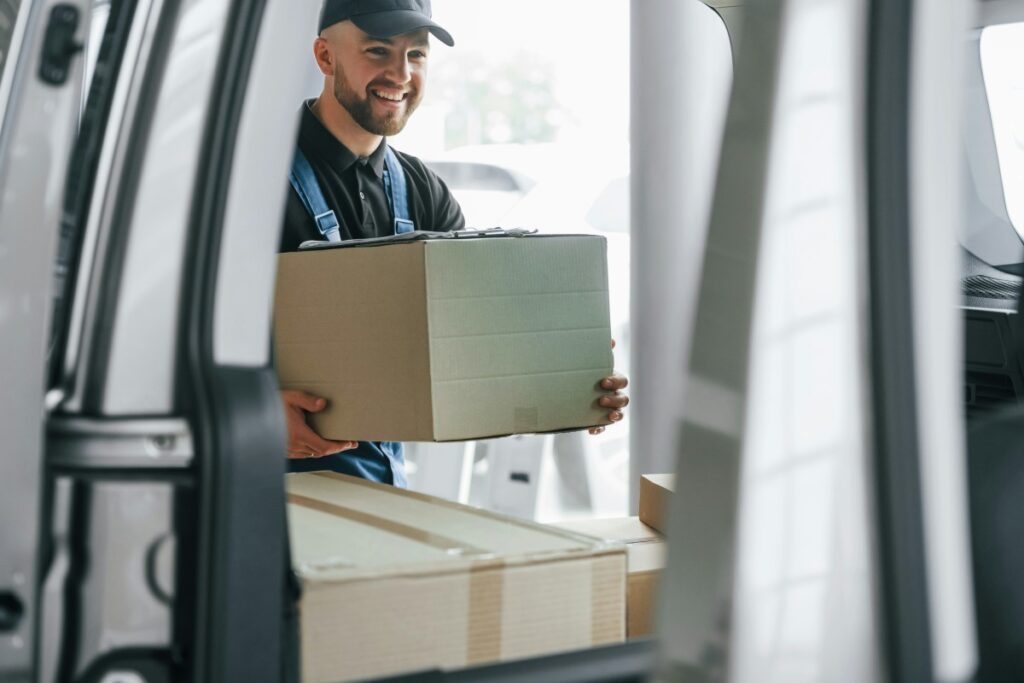- Blog
-
For Sellers
2025 Amazon FBA seller fees: Storage, shipping, and other costs
FBA gives you scale and speed, but knowing the fees upfront is key to keeping your margins healthy.

Selling on Amazon with Fulfillment by Amazon (FBA) can be incredibly powerful for scaling your business. The trade-off? A complex web of fees that can quickly eat into your profit margins if you don’t understand them.
Let’s break down exactly what you’ll pay in 2025 to use Amazon’s fulfillment network, so you can calculate your true costs and make smarter inventory decisions.
Core selling fees (non-FBA specific)
Before diving into FBA-specific costs, it’s important to note that all Amazon sellers pay baseline fees regardless of fulfillment method.
These include referral fees (typically 8-15% of your sale price), subscription costs ($39.99/month for Professional sellers or $0.99 per item for Individual sellers), and in some categories, additional closing fees.
For a complete breakdown of these core selling fees, check out our comprehensive guide on how much it costs to sell on Amazon in 2025.
FBA fulfillment fees
The core of FBA costs are fulfillment fees: per-unit charges covering picking, packing, shipping, customer service, and returns processing.
FBA fulfillment fees are calculated based on:
- Product size tier (Standard, Large Bulky, Extra-Large)
- Product category (apparel vs. non-apparel)
- Shipping weight (greater of unit weight or dimensional weight)
Here are some examples using current rates (as of August 2025):
Small Standard items (Non-apparel)
- 4 oz phone case: $3.15
- 10 oz kitchen gadget: $3.53
- 14 oz toy: $3.60
Larger items
- 3 lb board game: $6.62
- 8 lb baby cot (Large bulky): $12.27
- 48 lb computer monitor (Extra-large): $44.19
Apparel items consistently cost more to fulfill. Typically, $0.30-$1.00 higher per tier. For example, a t-shirt weighing 8-12 oz costs $3.72 to fulfill versus $3.43 for a similarly sized non-apparel item.
FBA storage fees
Beyond fulfillment, Amazon charges for the space your inventory occupies in its fulfillment centers.
Monthly storage fees
Storage fees are calculated based on the daily average volume (cubic feet) your inventory occupies:
Standard-size items
- January-September: $0.78 per cubic foot
- October-December: $2.40 per cubic foot (holiday season surge)
Oversize Items
- January-September: $0.56 per cubic foot
- October-December: $1.40 per cubic foot
Interestingly, standard-size items cost more per cubic foot despite being smaller, due to denser shelving requirements.
Storage utilization surcharges
Amazon penalizes inefficient inventory management through surcharges. For example, if you maintain stock for 25 weeks worth of sales (instead of the ideal 8-10 weeks), you’ll pay additional fees:
Example calculation: For 100 small items (0.05 cubic feet each) with a 25-week utilization ratio:
- Base fee: 100 × 0.05 × $0.78 = $3.90/month
- Surcharge: 100 × 0.05 × $0.44 = $2.20/month
- Total: $6.10/month (56% higher than base storage fees)
Dangerous goods surcharges
Items containing batteries, flammables, or aerosols incur higher storage rates:
- January-September: $0.99/cubic foot (standard size)
- October-December: $3.63/cubic foot
Additional FBA costs
Beyond core fulfillment and storage fees, several other costs can impact your FBA profitability.
Aged inventory surcharges
Items stored for more than 181 days incur additional monthly fees (starting at $0.50 per cubic foot):
- Based on an inventory snapshot taken on the 15th of each month
- Charged in addition to regular monthly storage fees
- Rates increase progressively for items aged 181-270 days, 271-365 days, and 365+ days
These fees can significantly impact long-term profitability for slow-moving inventory.
Returns processing fees
For certain categories (apparel, shoes, watches, jewelry, and luggage), Amazon charges for processing customer returns. The fee equals the original fulfillment fee for the item.
Removal and disposal costs
When you need to remove excess inventory from Amazon’s warehouses:
Removal orders (shipping back to you)
- Standard-size items: $1.04 to $2.89+ per unit
- Oversize items: $3.12 to $14.32+ per unit
Disposal orders (Amazon discards the items)
- Same cost structure as removal orders
FBA inbound placement service
This often-overlooked fee is charged when Amazon distributes your inventory across multiple fulfillment centers:
- Billed 45 days after shipment receipt
- Based on inbound destination and quantity
- Can be reduced by using Amazon Warehousing & Distribution (AWD) or opting for inventory placement service
How to calculate your total FBA costs
Understanding your complete FBA expenses is crucial for accurate profit calculations.
- Determine your selling plan fee
- Professional Plan: $39.99/month flat fee
- Individual Plan: $0.99 per item sold
- Calculate your referral fee
- Typically, 8-15% of the total sale price
- Category-specific (e.g., Electronics: 8%, Clothing: 17% if >$20)
- Add the FBA fulfillment fee
- Based on size tier, weight, and product type
- Ranges from $3.06 to $50+ depending on size/weight
- Estimate the monthly storage fee
- (Product volume in cubic feet) × (applicable monthly rate)
- Remember seasonal increases for Q4
- Include any additional fees
- Aged inventory surcharge (if stored >181 days)
- Returns processing fee (for applicable categories)
- Other special handling fees as needed
Amazon’s fee calculators
Amazon also provides several tools to estimate your fees:
- Revenue calculator: Compare FBA vs. FBM options with your product details
- Fee preview report: In Seller Central under Reports > Payments
- Estimated fees per unit: Directly in your Manage Inventory dashboard
Strategies to minimize FBA fees
Smart tactics can significantly reduce your FBA expenses and improve profit margins.
Product selection tips
- Choose items under 1 lb when possible to hit lower fulfillment brackets
- Design packaging to avoid crossing size tier thresholds (trimming 1″ off a box can save up to $2 per unit)
- Target products under 4 oz for the lowest fulfillment fees ($3.15 or less)
- Avoid products with dimensional weight issues (large but light items)
Inventory management best practices
- Monitor sell-through rates using Amazon’s FBA Inventory Age Report
- Remove or liquidate inventory before the 181-day mark to avoid aged inventory fees
- Stay below the 22-week storage utilization ratio threshold
- Schedule bulk removals in Q3 to avoid Q4’s peak storage costs
- Use the FBA New Selection Program for free 90-day storage on new ASINs
Strategic use of removal orders
Sometimes it’s cheaper to remove inventory than continue paying storage fees:
- Create removal orders before the 181-day mark to avoid aged inventory surcharges
- Use disposal orders for products that aren’t worth shipping back
- Consider liquidation to recover 5-10% of retail value on excess stock
- Schedule bulk removals in Q3 before holiday storage rates kick in
When to consider alternatives to FBA
FBA isn’t always the most cost-effective option:
- For large, heavy items (furniture, gym equipment), Fulfilled by Merchant often costs less
- For seasonal products, use FBA during peak selling periods only
- For slow-moving inventory, Amazon Warehousing & Distribution (AWD) offers lower storage rates
- For multi-channel sellers, compare Amazon’s Multi-Channel Fulfillment against third-party logistics providers
Final thoughts
Understanding Amazon FBA fees is essential for building a profitable Amazon business in 2025. While the fee structure may seem complex, taking the time to calculate your costs accurately will help you make informed decisions about which products to sell and how to optimize your inventory management.
Remember that FBA fees should be viewed as part of your overall business strategy. The convenience, Prime eligibility, and customer trust that come with FBA can often justify the costs—but only if you’re selecting products with sufficient margins and managing your inventory efficiently.
But beyond just understanding fees, optimizing your entire Amazon operation is critical for long-term success. Managing inventory levels, tracking profitability, and streamlining your prep and ship processes can dramatically impact your bottom line.
Seller 365 can help simplify these complex operations. With features for inventory management, profit tracking, and more all in one platform, you can spend less time juggling multiple software subscriptions and more time growing your business.
By consolidating your tech stack and optimizing your operational workflow, you’ll be well-positioned to maximize your Amazon FBA profitability in 2025 and beyond. Try it free for up to 14 days.






















